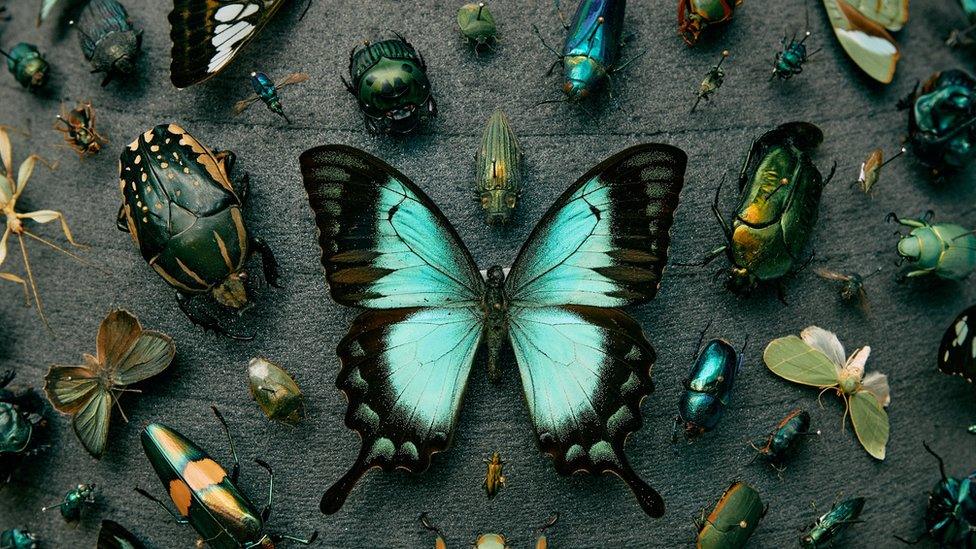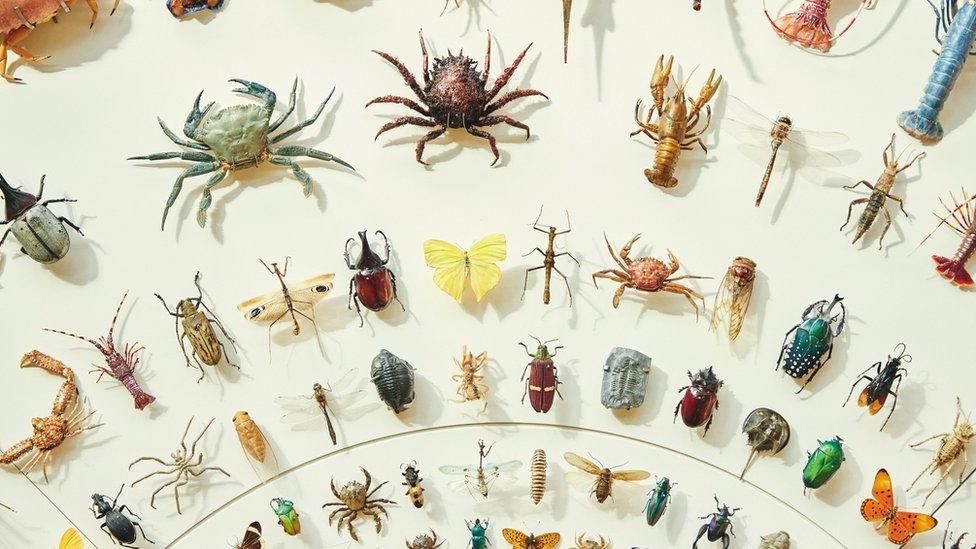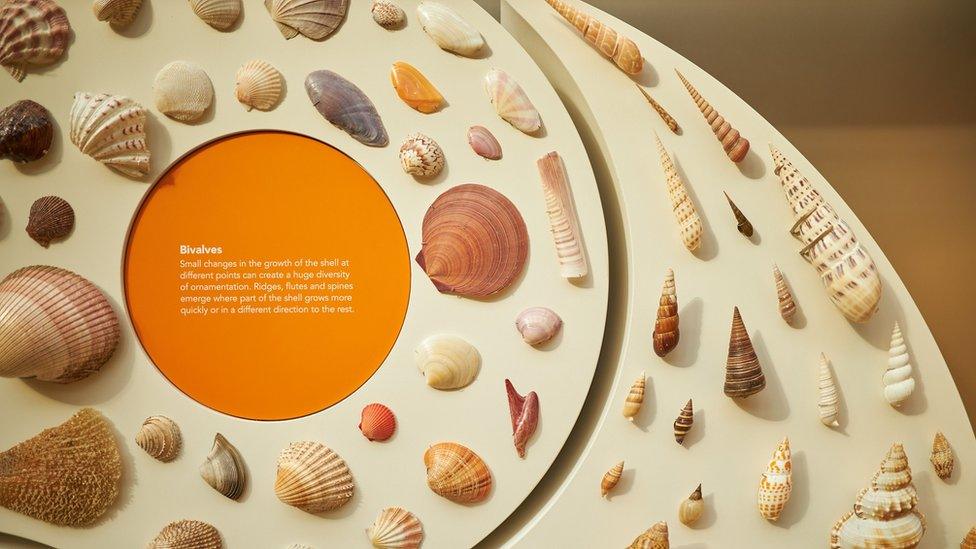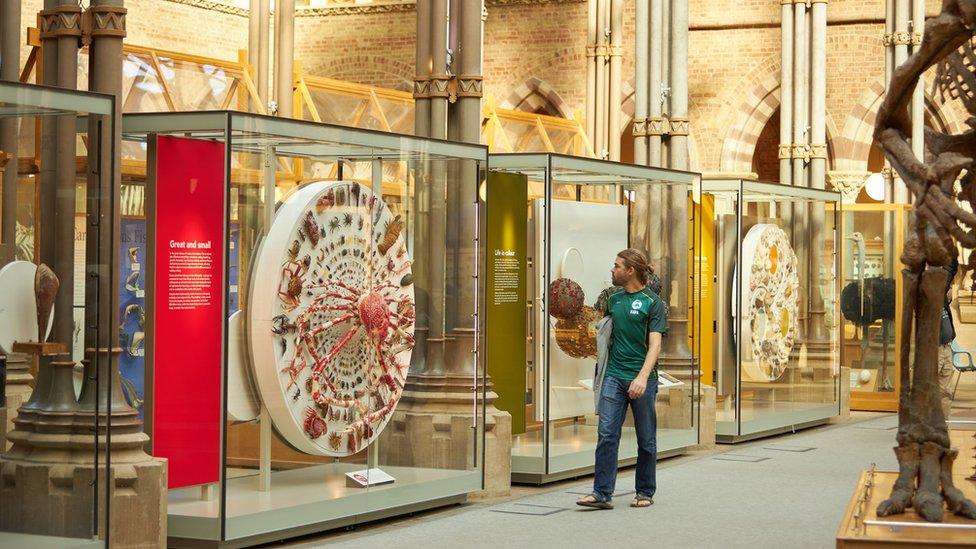Oxford University Museum of Natural History displays undergo major revamp
- Published

Other exhibits will open at the museum by spring 2024
A museum has unveiled the first major changes to its permanent displays in more than 20 years.
Oxford University Museum of Natural History's project to transform its centre court has taken two years, its first changes since the early 2000s.
The display is part of the Life, As We Know It exhibition, which first started in 2018. A further 16 new exhibits will open in spring 2024.
About 750,000 people visit the museum from around the world every year.

About 750,000 people visit the museum from all around the world every year
The display reveals further understanding of biodiversity, evolution and the history of the Earth and includes a gigantic Japanese spider crab and meteorites that are as old as the solar system.
When the last renovation to the centre court took place, about 175,000 people visited the museum every year.
Professor Paul Smith, the museum's director, said: "With their striking, contemporary designs and a focus on core scientific ideas, these displays are a big step forward for the museum.
"In them, we are taking a broader look at the complex interactions between life and the environment, both today and across geological time. And we are also offering an opportunity for visitors to reflect on our impact on the biodiversity of the future."

The new changes have taken two years to complete
The museum was founded in 1860 as the centre for scientific study at Oxford University. It now holds its internationally significant collections of entomological, geological and zoological specimens.
It is free to visit and its collections are growing as it expands its programme of natural environment research, teaching and public engagement.

The museum's director Prof Paul Smith said the new displays have "striking, contemporary designs"

Follow BBC South on Facebook, external, Twitter, external, or Instagram, external. Send your story ideas to south.newsonline@bbc.co.uk, external.